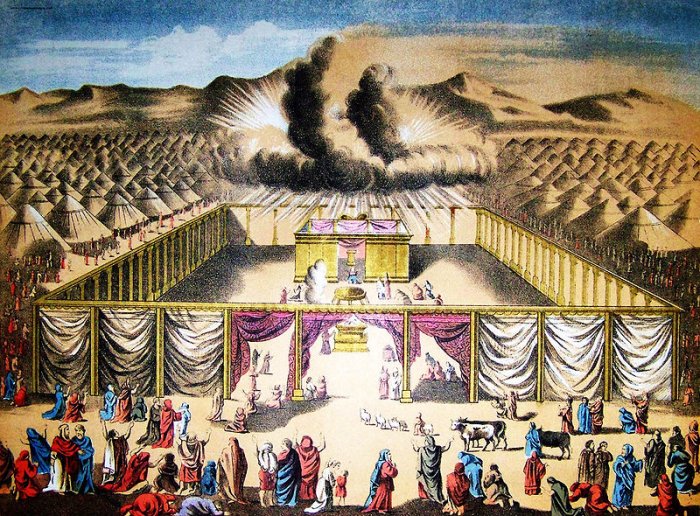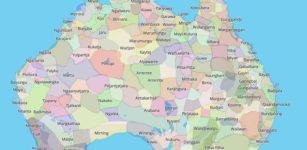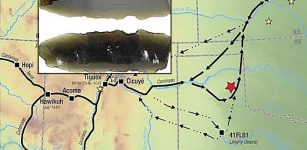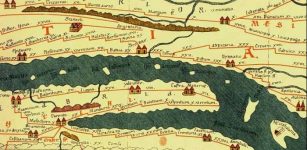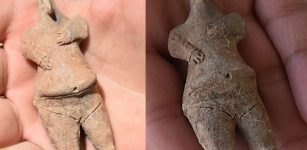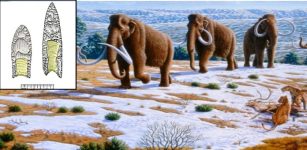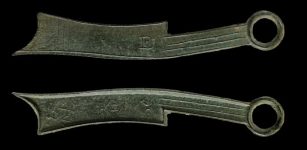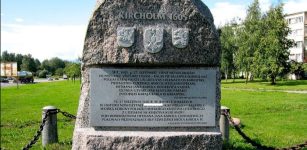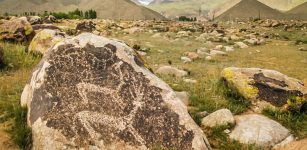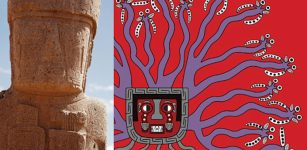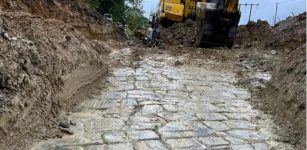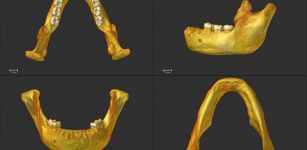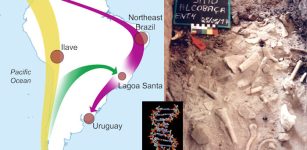Ancient Hebrew Inscription Reveals Location Of Biblical Mount Sinai
Jan Bartek – AncientPages.com - Mount Sinai, also known as Mount Moses, is a sacred site to Jews, Christians, and Muslims. In the Bible, it is written that God gave Moses the Ten Commandments on this holy mountain. The problem is that the location of this sacred place is shrouded in mystery and no-one knows its true location, and it remains one of many Biblical mysteries.
A group of Biblical scholars who belong to the Doubting Thomas Research Foundation (DTRF) says an ancient Hebrew inscription reveals the location of the sacred site where it is believed that God met Moses.
Is Jabal Maqla In Saudi Arabia The Best Candidate For Mount Sinai?
“There is a long-standing academic consensus that the story of the Exodus is entirely, or almost entirely, a myth.
This conclusion is partially based on research that assumes the traditional candidate for Mount Sinai in the southern part of Egypt's Sinai Peninsula is legitimate. Although some experts believe in the credibility of that tradition, many have come away disappointed with the evidence (or lack thereof) after a great deal of archaeological excavation in the area.
The result has been a widespread rejection of the historicity of the Exodus story and proposals for over a dozen other mountains as possible candidates for Mount Sinai. Some of these candidates are in Egypt’s Sinai Peninsula, but others are further east in Saudi Arabia,” DTRF scholars write.
DTRF experts have now announced Jabal Maqla located in northeast Saudi Arabia near the border with Jordan is the best candidate for Mount Sinai.
Proto-Hebrew Inscriptions Of The Oldest Menorah
On their website, they have released a series of pictures of what they claim are ancient Hebrew inscriptions found at the site — including what they suggested could be the oldest inscription of a Menorah.
Sputnik News reports, “the scholars believe the presence of these inscriptions is proof that there were speakers of early Hebrew in the area the time.
According to researchers of the DTRF, Dr. Miles Jones, a historical linguist, examined the photographs and said they are believed to be “proto-Hebrew”.
"The Saudis have confirmed that there are hundreds of Thamudic inscriptions in the area around the Jabal Maqla mountain. The archaeologists commissioned by the Saudi government reject the notion that the inscriptions qualify as evidence of the Israelites having been there. However, at least two experts in ancient Hebrew inscriptions are confident that these proto-Hebrew inscriptions at Mount Sinai substantiate the Exodus account," DTRF explained. Credit: Doubting Thomas Research Foundation (DTRF)
DTRF explained “research regarding Jabal Maqla's candidacy has been severely limited due to a lack of access to outsiders, with aspiring visitors being arrested, threatened, harassed and blocked by Saudi security or hostile locals. Doubting Thomas Research Foundation staff are among a tiny group of Westerners who have successfully visited the sites in question.”
In the coming years they “plan more trips to Saudi Arabia, and to other candidates for Mount Sinai, to further investigate evidence of the Exodus.”
See also:
Capernaum – Was The City On The Sea Jesus’ Home?
Enigma Of Nehushtan – The Biblical Copper Snake
Mystery Of The Second Gabriel Stone And The Man Resurrected By Archangel Gabriel
According to DTRF the studied inscriptions, discovered near the Split Rock northwest of Jabal Maqla date to the time of Exodus and it seems they mention the name “Yahweh”, the Hebrew name for God. There are also “pictures of what looks like murals of footprints inscribed on some of the rocks.
DTRF states experts who “used to work in Saudi Arabia and visited Jabal Maqla many times, reported finding countless inscriptions showing feet in sandals near the mountain and near the possible Split Rock of Rephidim site.”
It is written in Deuteronomy 11:24 and Joshua 1:3 that God told the Israelites, “Every place where you set your foot will be yours.”
Scientists specializing in proto-Hebrew drew a connection between these verses and the footprint inscriptions that appeared to be marking Hebrew territory.
Dr. Sung Hak Kim, “who was once the personal physician to the Governor of Mecca, was granted wide-ranging permission to explore northwest Saudi Arabia because of his high-level friendships.
Is this the oldest inscription of a Menorah? Credit: Doubting Thomas Research Foundation (DTRF)
During his searches, he discovered what is likely the oldest-known depiction of a menorah in one of the valleys that leads to Jabal Maqla. The image appears on a large rock with various other inscriptions.”
The menorah is a very important symbol in Judaism, dating all the way back to the time described in Exodus 25:31-32 where the menorah is mentioned as an integral part of the Tabernacle.
Search For The Tabernacle
The Tabernacle has never been located despite an ongoing search. The 10 ancient jugs discovered in the old city of Shiloh’s ancient boundaries have brought the city, the tabernacle and ancient Israel to the public’s eye.
Since these jugs pre-date Solomon’s temple, they lead the archaeologists to speculate that they may have uncovered vessels that were once used by the priests of the Tabernacle.
The Tabernacle in the Wilderness. Illustration from the 1890 Holman Bible. Credit: Public Domain
Shiloh ("place of peace") was an ancient city in Samaria mentioned in the Hebrew Bible. The city itself was established by Joshua. He was the one, after the conquest, who decided that location was going to be his governmental and religious center for the new country.
“For some years now, the Israel Unit of Israel’s Civil Administration and the Shiloh Association have been seeking the southern wall. It may or may not lead to the location of the ancient tabernacle.
One reason for why that may be looking in the wrong place as some archaeologists suggest that the evidence places the tabernacle on the north of the ancient tell just outside of the city on a rock shelf.”
See also: More Archaeology News
DTRF scholars argue all evidence uncovered until now suggests that their assessment of the site in Saudi Arabia as being Mount Sinai is accurate.
Written by Jan Bartek - AncientPages.com Staff Writer




